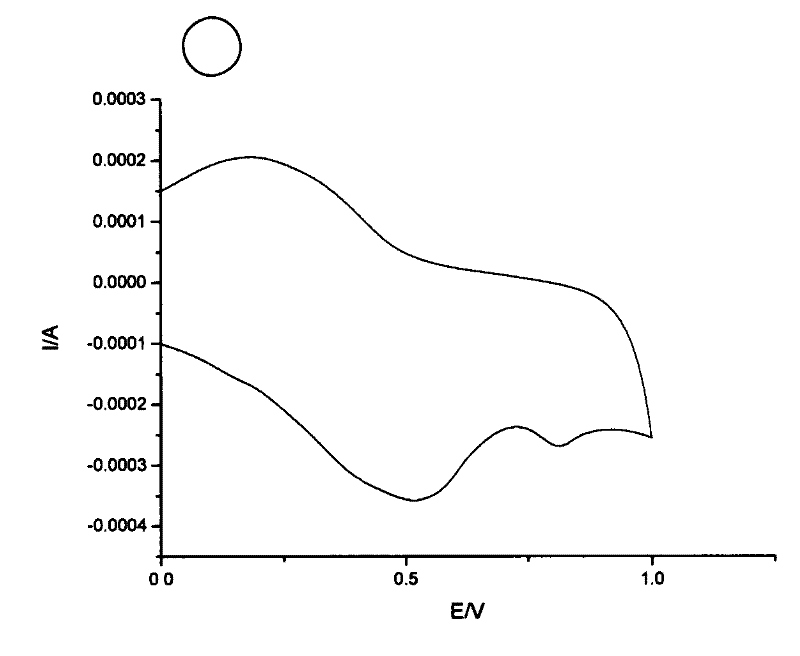Electrochemical sensor capable of simultaneously measuring contents of hematoxylin and brazilin
A technology of Brazilian hematoxylin and hematoxylin, applied in the direction of electrochemical variables of materials, etc., can solve the problem of difficulty in simultaneous determination of hematoxylin and Brazilian hematoxylin content.
- Summary
- Abstract
- Description
- Claims
- Application Information
AI Technical Summary
Problems solved by technology
Method used
Image
Examples
Embodiment 1
[0017] Graphite electrode through 0.3μm Al 2 o 3 After the powder is polished into a mirror surface, it is ultrasonically cleaned with ethanol and water in sequence. Using ultrasonic dispersion, 1 mg of carbon nanotubes and 0.1 mg of platinum nanowires were dispersed in 1 mL of water to form a mixed suspension of carbon nanotubes and platinum nanowires. Use a micro-sampler to take 2 μL of this suspension on the surface of the polished glassy carbon electrode, dry it at room temperature, and then evenly cover the electrode surface with 1 μL Nafion, and after drying, the platinum nanowire-carbon nanometer tube electrode. Dip this electrode into a 2.0×10 -3 mol / L p-aminobenzenesulfonic acid pH 7.0 PBS solution, using a three-electrode system under static conditions, under 1.5V voltage, with 100mV / s cycle scanning for 10 laps, take it out, and rinse with secondary water to obtain poly p-Sanilic acid / platinum nanowire-carbon nanotube composite film modified electrode.
[0018]...
Embodiment 2
[0023] Graphite electrode through 0.3μm Al 2 o 3 After the powder is polished into a mirror surface, it is ultrasonically cleaned with ethanol and water in sequence. 10 mg of carbon nanotubes and 0.8 mg of platinum nanowires were dispersed in 1 mL of water by ultrasonic dispersion to form a mixed suspension of carbon nanotubes and platinum nanowires. Use a micro-sampler to take 2 μL of this suspension on the surface of the polished glassy carbon electrode, dry it at room temperature, and then evenly cover the electrode surface with 1 μL Nafion, and after drying, the platinum nanowire-carbon nanometer tube electrode. Dip this electrode into a 5.0×10 -3 mol / L p-aminobenzenesulfonic acid pH 7.0 PBS solution, using a three-electrode system under static conditions, at a voltage of 0.5V, with 100mV / s cycle scanning for 10 laps, take it out, rinse with secondary water, and obtain poly 4-aminobenzenesulfonic acid / platinum nanowire-carbon nanotube composite film modified electrode....
PUM
 Login to View More
Login to View More Abstract
Description
Claims
Application Information
 Login to View More
Login to View More - R&D
- Intellectual Property
- Life Sciences
- Materials
- Tech Scout
- Unparalleled Data Quality
- Higher Quality Content
- 60% Fewer Hallucinations
Browse by: Latest US Patents, China's latest patents, Technical Efficacy Thesaurus, Application Domain, Technology Topic, Popular Technical Reports.
© 2025 PatSnap. All rights reserved.Legal|Privacy policy|Modern Slavery Act Transparency Statement|Sitemap|About US| Contact US: help@patsnap.com

